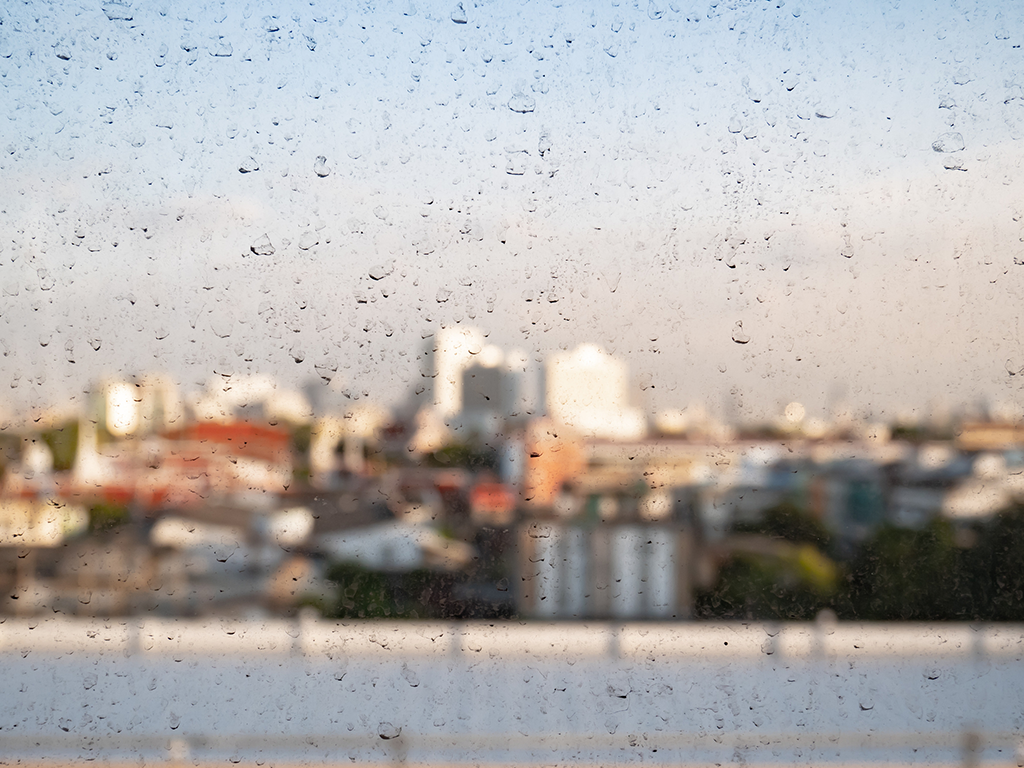CNN recently reported that 90% of nations breathe air which exceeds the PM2.5 (or fine particle) concentrations recommended by the World Health Organization. This same report classified ActivePure’s home city of Dallas as the 5th most polluted city in the country.
We have the tools necessary to combat this air quality issue when we bring that air indoors. We’ll review PM2.5, as well as what can be done about it.
What Is PM2.5
Particulate matter—abbreviated “PM”—is a mix of liquid and solid particles, which are small enough to remain suspended in the air.
The smaller the particle, the more danger it poses to human health. Thus, researchers and regulators tend to categorize PM by size.
“PM2.5” refers to particulate matter 2.5 microns (µm) or smaller. (A micron is equal to one-millionth of a meter.) PM2.5 includes the subcategory PM0.1 (ultrafine particles) which are even more detrimental to health.
PM2.5’s size distinguishes it from the dust you see floating through an indoor sunbeam. Though high PM2.5 often accompanies visible changes to the air from smog or smoke, it is not something visible to the naked eye. PM2.5 can reach unhealthy concentrations on an apparently clear day (or in an apparently clean room).
What Causes PM2.5 Pollution?
Most (but not all) PM2.5 results from human activities, such as:
- Fuel combustion (i.e., vehicles, furnaces, stoves, factories, and powerplants)
- Road construction
- Tobacco and marijuana smoke
- Trash burning
Wildfires are also a major source of PM2.5. According to the EPA, the “extent of area burned by wildfires each year appears to have increased since the 1980s.”
What Are the Negative Effects of PM2.5?
Health Effects
PM2.5 is small enough to penetrate deep into the lungs, and even enter the bloodstream. Thus, fine particle exposure—whether short-term or long-term—can cause a range of serious health problems. According to the California Air Resources Board:
- Short-term exposure to PM2.5 is “associated with premature mortality, increased hospital admissions for heart or lung causes, acute and chronic bronchitis, asthma attacks, emergency room visits, respiratory symptoms, and restricted activity days[...]”
- Long-term exposure to PM2.5 “has been linked to premature death, particularly in people who have chronic heart or lung diseases[...]”
Cognitive Effects
PM2.5’s physical effects are exacerbated by mental ones. A study by the Harvard T.H. Chan School of Public Health tested people’s performance on cognitive tests under elevated levels of PM2.5 and carbon dioxide. According to the school’s website, “The study found that response times on the color-based test were slower as PM2.5 and CO2 levels increased. They also found that accuracy on the color-based test was affected by PM2.5 and CO2 levels.” The study did not find the PM2.5 impaired cognition on math-based activities; however, “[as] concentrations of both pollutants increased[...]participants completed fewer questions correctly in the allotted test time.”
Economic Effects
These decreases in health and cognition snowball into a massive economic cost. A study published in the World Bank eLibrary reports that “the global cost of health damages associated with exposure to air pollution is $8.1 trillion, equivalent to 6.1% of global GDP.” Admittedly, this estimate includes all forms of air pollution, not just PM2.5. However, a 2016 study calculated that if China neglected to control PM2.5, it would suffer a 2% loss in GDP from that pollutant alone. When you consider that controlling fine particles would only cost 0.79% of China’s GDP, reducing particulate matter is clearly a net gain.
How Can I Reduce PM2.5 Indoors
 Air purifiers are a useful means of reducing PM2.5 indoors.
Air purifiers are a useful means of reducing PM2.5 indoors.
The best thing you can do to reduce PM2.5 indoors is to reduce it outdoors; outdoor pollution often infiltrates your indoor space through windows, building seams, and even the ventilation system (see below). Obviously, though, you don’t have as much control over the outdoor air as your own space. Thus, the following tools focus exclusively on your indoor environment.
1. Seal Your Building (Maybe)
One method of reducing infiltration is to get your building professionally sealed. If you use this method, we suggest caution. Counterintuitively, sealing your building can make indoor air quality (IAQ) worse by trapping contaminants (and carbon dioxide) indoors. Thus, it is important to use sealing in conjunction with other methods.
2. Properly Maintain Heating and Cooking Appliances
Cooking and heating fuel is a major source of indoor PM2.5. Wood fireplaces, kerosene heaters, coal ovens, and gas stoves all contribute to indoor particulate matter. Strive to replace your fuel-burning appliances with electric versions as they wear out. If there is any appliance you don’t wish to replace with a cleaner version, ensure that it is inspected and maintained yearly.
3. Reduce Other Indoor Sources
- Make your area a no-smoking zone; smoking and vaping produce high concentrations of PM2.5.
- Cook foods on lower heat; baking instead of broiling or frying can reduce particulate matter during meal prep.
- Use vacuums with HEPA filters; these properly capture both large and small particles which settle on surfaces, ensuring they don’t re-enter the air.
4. Improve Ventilation (the Right Way)
The EPA considers ventilation 1 of the 3 pillars of better indoor air. Yet if 90% of countries have unhealthy outdoor air, how can increasing ventilation improve IAQ?
The key is to properly filter the air as it is brought in. MERV 13 filters are often recommended for filtering air that comes into the building from your HVAC system. However, your existing system might not be compatible with MERV 13 filters, resulting in costly damage. For ventilation to be practical, you will need to pair it with air purifiers.
5. Invest in Air Purifiers
If your HVAC can’t handle high MERV or you don’t want the resulting high electricity bill from using a denser filter, you can still improve IAQ with standalone air purifiers. They allow you to use true HEPA filters (MERV 17 or higher) in a separate device, thus avoiding strain on your existing HVAC system.
Many air purifiers supplement with HEPA filters. Thus, they have the bonus of removing particulate matter while also reducing bacteria, viruses, mold, and VOCs. Even if you already have MERV 13 induct filters, this pathogen and VO reduction is another solid reason to invest in air purifiers.
Further Reading: Address PM2.5 in Commercial Spaces
If you are a facilities manager of a commercial property, we have additional tips specific to offices about addressing particulate matter.



